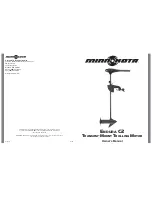
Breakouts
Breakouts
I2C Address
Headers
Jumpers for I2C headers
USB Connector (J1)
Remote BJT
TMP461
7
SBOU152A – July 2015 – Revised September 2019
Copyright © 2015–2019, Texas Instruments Incorporated
TMP461EVM Hardware Overview and Setup
Chapter 2
SBOU152A – July 2015 – Revised September 2019
TMP461EVM Hardware Overview and Setup
This section describes the setup and some of the hardware features present on the TMP461EVM.
WARNING
Many of the components on the TMP461EVM are susceptible to
damage by electrostatic discharge (ESD). Customers are advised
to observe proper ESD handling precautions when unpacking and
handling the EVM, including the use of a grounded wrist strap at
an approved ESD workstation.
2.1
Board Connectors and Components
shows the top side of the TMP461EVM. Highlighted are the USB connector, breakouts, the
TMP461 device, and the remote BJT. The USB connector is directly plugged into the computer for power
and communication from the computer to the USB2ANY mircocontroller. The engineer can use the
perforated breakouts to break off certain sections of the EVM and connect them to external systems.
Headers can also be soldered to the vias to be used as test points. These vias are positioned 100 mils
apart to be compatible with a standard breadboard.
Figure 2-1. TMP461EVM Board Top Side
2.1.1 EVM Power Supply Input – J1
J1 is the USB connector to the PC. The interface is used to access the device’s registers and read the
conversion data from the TMP461 through I2C communication protocol. The TMP461EVM uses the +5-V
input power supply of the USB connector to power the EVM. The EVM does not require an external power
supply. The board is powered by the USB port and provides a sw5 V.








































